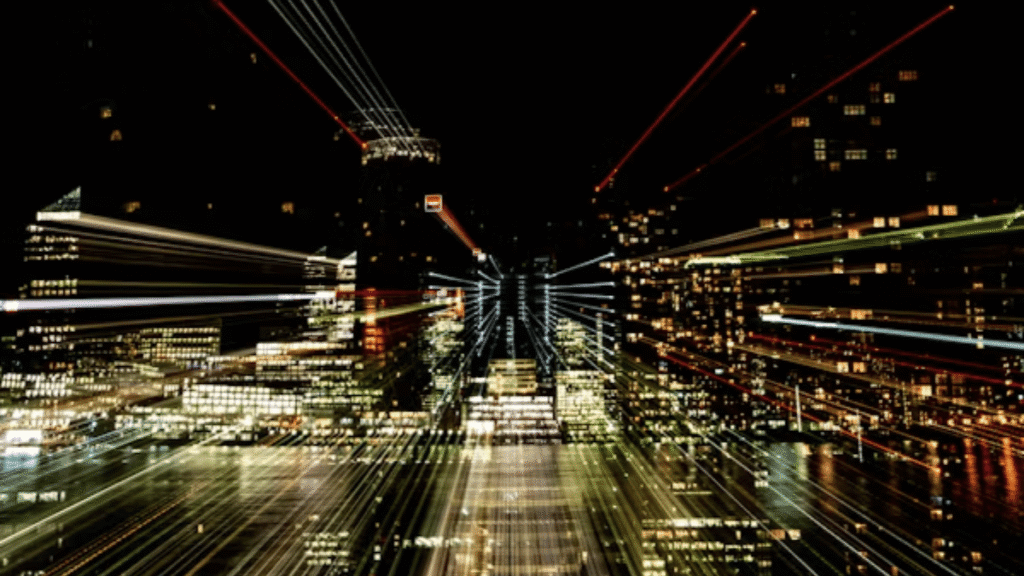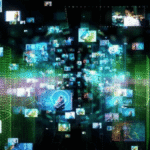Introduction: What “Switching 2nd” Truly Means in the Modern World
In an age defined by constant evolution, the concept of “Switching 2nd” represents the second phase of transformation—when systems, people, or organizations move beyond mere change and begin mastering adaptation itself. The searcher’s intent behind “switching 2nd” is to understand how transitions in technology, strategy, or mindset create long-term stability and innovation after an initial shift.
This isn’t just about switching from one device, habit, or policy to another. It’s about what happens after that first switch—how individuals, businesses, and societies navigate the second wave of adaptation that determines whether change truly succeeds or collapses. In essence, Switching 2nd explores the art of sustained transformation.
From artificial intelligence systems adjusting to new data sets, to organizations rethinking post-digital workflows, “Switching’s 2nd” marks a universal process of recalibration in a world that never stands still.
The Foundation of Switching: Understanding the First and Second Phase
Before we explore “Switching’s 2nd,” we must understand the two phases of transformation that shape every form of progress—technological or human.
| Phase | Definition | Focus | Outcome |
|---|---|---|---|
| First Switching | The initial shift from old to new systems | Change reaction | Disruption, uncertainty |
| Second Switching (Switching 2nd) | The consolidation and optimization stage | Adaptation mastery | Efficiency, innovation, balance |
The first switch often brings excitement and instability—it’s the phase of discovery, disruption, and learning. The second switch, however, is where resilience is built. It is when a company integrates a new system effectively, when individuals adjust emotionally and cognitively, or when technology stabilizes into its mature form.
“Real innovation doesn’t come with the first switch—it blooms in the second,” remarks Dr. Elina Hart, a digital transformation strategist.
This philosophy defines why “Switching’s 2nd” has become a critical mindset in leadership, technology, and everyday life.
The Psychology of Switching 2nd: How Humans Adapt Beyond Change
The second switch is as much psychological as it is procedural. Humans experience transitions in stages—anticipation, anxiety, adaptation, and finally mastery.
During “Switching’s 2nd,” individuals develop resilience and cognitive flexibility—traits essential for functioning in an unpredictable world. This phase focuses on internalizing new habits, stabilizing emotions, and refining performance.
Cognitive Elements of Switching 2nd:
- Recognition: Understanding that change is not complete after adoption—it needs reinforcement.
- Integration: Aligning new systems or behaviors with existing mental frameworks.
- Reflection: Evaluating outcomes, feedback, and emotional impact.
- Recommitment: Sustaining motivation through purpose-driven engagement.
It’s in this second phase that transformation becomes identity—whether it’s learning a new skill, adapting to hybrid work, or navigating AI-assisted environments.
The Business Context: How Companies Master Switching 2nd
In corporate transformation, the first switch is usually technological—implementing new tools, systems, or structures. The second switch happens when businesses evolve their culture, communication, and strategy around those tools.
Organizations that fail to master this stage often experience digital fatigue or innovation stagnation. But those that succeed achieve something deeper—organizational fluency.
The Business Cycle of Switching 2nd
- Transition Implementation: Introducing new technology or system.
- Adoption Resistance: Employees struggle with new protocols.
- Stabilization: Workflows start to balance.
- Optimization: Systems become natural, efficient, and self-improving.
For example, when a company moves from manual to AI-driven processes, the first switch brings automation; the second switch brings intelligent collaboration—a harmonious partnership between humans and technology.
“Technology doesn’t replace people; it refines them—if we learn to switch again,” says management thinker Noor Patel.
The Technological Perspective: Switching 2nd in Digital Systems
In computing and engineering, “Switching’s 2nd” represents an evolutionary upgrade—a transition from initial deployment to optimized intelligence. It’s where AI learns from its environment, networks self-correct, and data systems become predictive rather than reactive.
Key Technological Examples
- AI Learning Loops: After the first dataset training, the “Switching’s 2nd” occurs when the system begins self-tuning based on contextual feedback.
- Cloud Infrastructure: The first migration moves data; the second optimizes integration, latency, and cybersecurity.
- 5G Networks: Initial deployment enhances speed, but second-phase switching focuses on AI-driven bandwidth allocation.
This stage is critical for achieving sustainable innovation—technology that doesn’t just perform, but evolves.
Table: Comparing Phases of Technological Switching
| Aspect | First Switching | Switching 2nd (Advanced Phase) |
|---|---|---|
| Focus | Deployment | Optimization and evolution |
| Human Role | Adaptation | Collaboration and supervision |
| AI Involvement | Limited to learning | Active self-improvement |
| Performance | Reactive | Predictive and intelligent |
| Security | Rule-based | Adaptive, autonomous protection |
Switching’s 2nd represents a digital maturity curve—a turning point when systems and humans begin working in true partnership.
Societal Adaptation: The Cultural Layer of Switching 2nd
The global society today is collectively in a “Switching’s 2nd” moment. We’ve already adapted to digital life—but now, we’re learning to live well in it.
Socially, this means developing new etiquettes, emotional intelligence, and digital citizenship. For instance, the world’s shift from physical to remote work is complete; now the second switch involves nurturing digital well-being, combating burnout, and ensuring fairness in AI-driven workplaces.
Key Cultural Shifts in Switching 2nd
- From consumption to creation (people producing digital content rather than passively scrolling).
- From information overload to meaning curation.
- From technological dependence to technological harmony.
- From global competition to collaborative innovation.
The second switch isn’t just digital—it’s deeply human. It challenges us to question not how we change, but how we continue after changing.
The Education Dimension: Switching 2nd in Learning
Education systems worldwide have completed their first digital transformation—online classes, e-learning platforms, and hybrid teaching models. Now comes “Switching 2nd,” the integration of adaptive learning technologies and humanized AI tutors that personalize education.
In this stage, the role of educators evolves from knowledge transmitters to learning architects who design experiences around each student’s cognitive rhythm.
Features of Switching 2nd in Education
- AI-driven learning paths that adapt to student progress.
- Emotional analytics that detect learning fatigue.
- Blockchain-certified achievements ensuring authenticity.
- Digital mentorship replacing rote instruction.
This evolution represents the next great educational renaissance—one that values emotional intelligence as much as academic mastery.
“Switching 2nd in education is about shifting from teaching information to cultivating interpretation,” observes academic researcher Sofia Legrand.
Environmental Implications: A Sustainable Second Switch
In the ecological context, “Switching 2nd” signifies the move from awareness to actionable sustainability. The first phase brought renewable energy and green policies; the second focuses on intelligent ecosystems—AI-managed grids, predictive waste systems, and bio-adaptive architecture.
It’s not enough to adopt green practices; the second switch ensures these solutions sustain themselves intelligently. For example:
- Smart cities automatically adjust energy flows based on usage.
- Electric grids learn to predict and distribute renewable power efficiently.
- Sustainable agriculture integrates drone analytics for crop health.
This phase signals the birth of an eco-intelligent civilization—where technology not only conserves the planet but collaborates with it.
The Human Side: Emotion, Resilience, and the Second Switch
While switching once tests our adaptability, switching twice tests our emotional intelligence. The first phase often causes excitement, confusion, or fear; the second cultivates emotional balance.
During “Switching 2nd,” individuals must develop empathy, patience, and reflection to thrive. For example, remote workers must now learn not just how to work online but how to build trust digitally, lead remotely, and stay mentally healthy.
Psychological Traits Strengthened During Switching 2nd
- Self-regulation under constant digital stimulation.
- Growth mindset toward evolving skill sets.
- Emotional endurance amid uncertainty.
- Confidence in re-learning and re-creating identity.
This emotional resilience forms the foundation of every meaningful transformation.
The Global Economy: Switching 2nd as Economic Evolution
Economically, Switching 2nd represents the stabilization of innovation after initial disruption. The first phase of digital economies brought cryptocurrencies, e-commerce, and automation; the second focuses on integration, governance, and equity.
Economic Shifts in Switching 2nd
- Digital currencies evolving into stable, regulated assets.
- Decentralized work models maturing into balanced ecosystems.
- Cross-border digital trade creating inclusive growth.
- AI-driven productivity blending with human creativity.
The second switch thus transforms volatility into vision. It’s where chaos becomes structure, and experimentation turns into sustainable progress.
Case Example: A Nation’s Second Switch
Consider a developing country that has embraced digital payments during its first switch. The second switch begins when local industries integrate AI-based credit systems, when education adapts to digital literacy, and when government systems use analytics for equitable policy.
In that sense, “Switching 2nd” becomes a national state of evolution, bridging modernization with social inclusion.
“The second switch isn’t about catching up—it’s about crafting identity in the digital age,” says economist Tariq Hasan.
Leadership and Strategy: Steering Through the Second Switch
Effective leadership during Switching 2nd requires balance between innovation enthusiasm and operational patience. Leaders must avoid the trap of constant transformation and instead focus on consolidation and human alignment.
Key Leadership Traits for Switching 2nd
- Strategic Reflection: Knowing when to pause and optimize.
- Empathy: Understanding employees’ adaptive stress.
- Data Awareness: Translating analytics into human impact.
- Cultural Agility: Encouraging experimentation without chaos.
The best leaders of the second switch are those who see progress as rhythm, not race.
Table: Leadership Focus Across the Two Switches
| Phase | Leadership Role | Organizational Focus | Outcome |
|---|---|---|---|
| First Switch | Motivator and disruptor | Adoption and engagement | Rapid change |
| Second Switch | Mentor and stabilizer | Integration and growth | Long-term resilience |
This shows why switching 2nd requires leaders to evolve from change-makers to culture-shapers.
The Ethical Horizon: Switching 2nd and Digital Morality
The second switch is not only about efficiency—it’s about ethics. As automation grows, ethical dilemmas intensify. Who owns AI decisions? How much data should algorithms access?
Switching 2nd demands a moral recalibration—a phase where humanity defines its digital values. It’s not enough to use technology; we must align it with compassion, fairness, and transparency.
This moral switch ensures that innovation doesn’t outpace integrity.
Future Predictions: The Third Wave After Switching 2nd
While this article focuses on the second switch, it hints at what’s next: the Third Wave, where human consciousness and artificial intelligence integrate seamlessly. In that era, adaptability becomes instinctive, and digital systems anticipate emotional as well as operational needs.
Switching 2nd lays the groundwork for that future—a society that learns to evolve with intelligence, empathy, and purpose.
Conclusion: The Power of the Second Switch
“Switching 2nd” isn’t about change—it’s about continuation. It teaches us that transformation doesn’t end with transition; it matures through reflection, resilience, and reinvention.
From businesses stabilizing innovation to individuals mastering emotional adaptability, the second switch defines the future of sustainable progress.
It’s a reminder that the real challenge isn’t how fast we change—but how well we live after changing.
“The second switch is where humanity learns not just to survive innovation, but to feel at home within it.”
FAQs
1. What does Switching 2nd mean?
Switching 2nd refers to the second phase of change—when individuals or systems evolve beyond adaptation into mastery and balance.
2. How is Switching 2nd different from regular transformation?
Unlike initial change, Switching 2nd focuses on optimization, sustainability, and emotional integration after disruption.
3. Why is Switching 2nd important in business?
It ensures that digital or organizational change becomes long-term progress rather than temporary adjustment, improving efficiency and morale.
4. What technologies are part of Switching 2nd?
AI self-learning systems, cloud optimization, adaptive networks, and blockchain-integrated governance tools are key to the second phase.
5. How can individuals apply the Switching 2nd mindset?
By embracing reflection, learning from feedback, and focusing on sustainable improvement instead of constant novelty.







